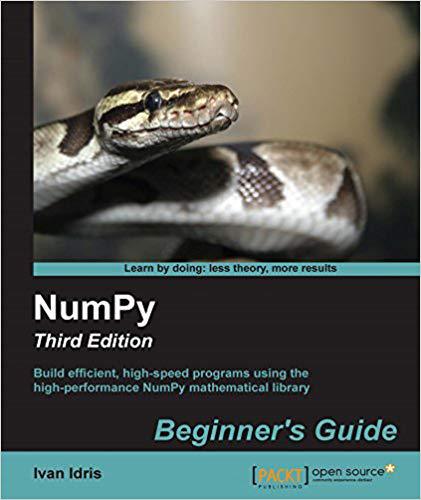

Most ebook files are in PDF format, so you can easily read them using various software such as Foxit Reader or directly on the Google Chrome browser.
Some ebook files are released by publishers in other formats such as .awz, .mobi, .epub, .fb2, etc. You may need to install specific software to read these formats on mobile/PC, such as Calibre.
Please read the tutorial at this link: https://ebookbell.com/faq
We offer FREE conversion to the popular formats you request; however, this may take some time. Therefore, right after payment, please email us, and we will try to provide the service as quickly as possible.
For some exceptional file formats or broken links (if any), please refrain from opening any disputes. Instead, email us first, and we will try to assist within a maximum of 6 hours.
EbookBell Team

4.4
102 reviewsBuild efficient, high-speed programs using the high-performance NumPy mathematical library
This book is for the scientists, engineers, programmers, or analysts looking for a high-quality, open source mathematical library. Knowledge of Python is assumed. Also, some affinity, or at least interest, in mathematics and statistics is required. However, I have provided brief explanations and pointers to learning resources.
In today's world of science and technology, it's all about speed and flexibility. When it comes to scientific computing, NumPy tops the list. NumPy will give you both speed and high productivity. This book will walk you through NumPy with clear, step-by-step examples and just the right amount of theory. The book focuses on the fundamentals of NumPy, including array objects, functions, and matrices, each of them explained with practical examples. You will then learn about different NumPy modules while performing mathematical operations such as calculating the Fourier transform, finding the inverse of a matrix, and determining eigenvalues, among many others. This book is a one-stop solution to knowing the ins and outs of the vast NumPy library, empowering you to use its wide range of mathematical features to build efficient, high-speed programs.
**
About the AuthorIvan Idris
Ivan Idris has an MSc in experimental physics. His graduation thesis had a strong emphasis on applied computer science. After graduating, he worked for several companies as a Java developer, data warehouse developer, and QA Analyst. His main professional interests are business intelligence, big data, and cloud computing. Ivan enjoys writing clean, testable code and interesting technical articles. He is the author of NumPy Beginner's Guide, NumPy Cookbook, Learning NumPy Array, and Python Data Analysis. You can find more information about him and a blog with a few examples of NumPy at http://ivanidris.net/wordpress/.